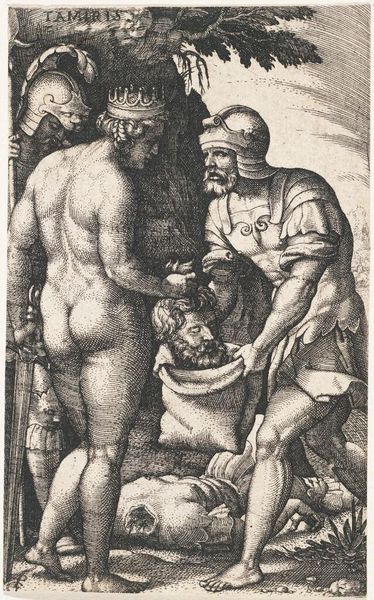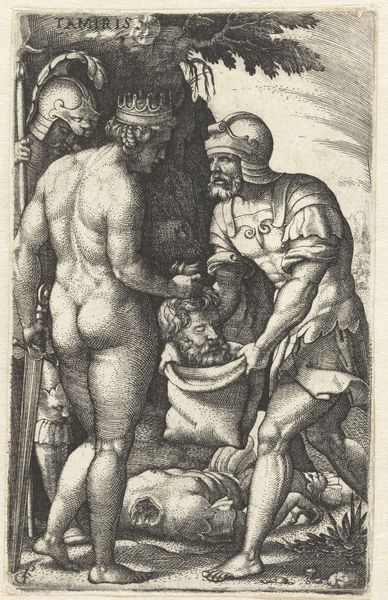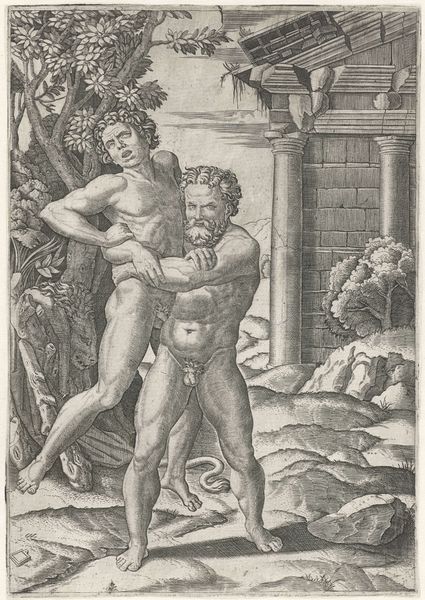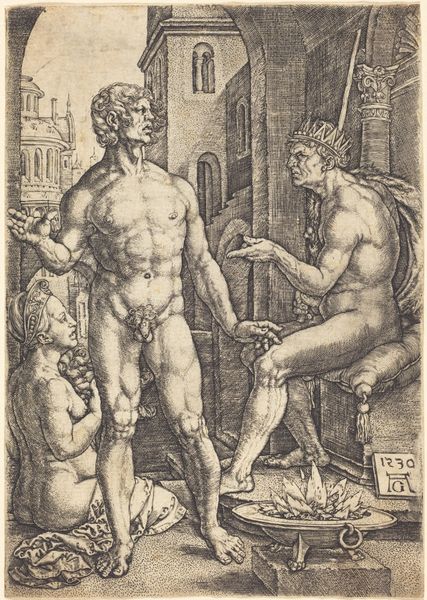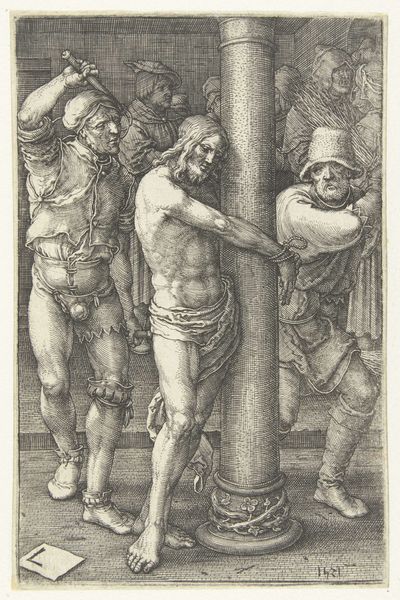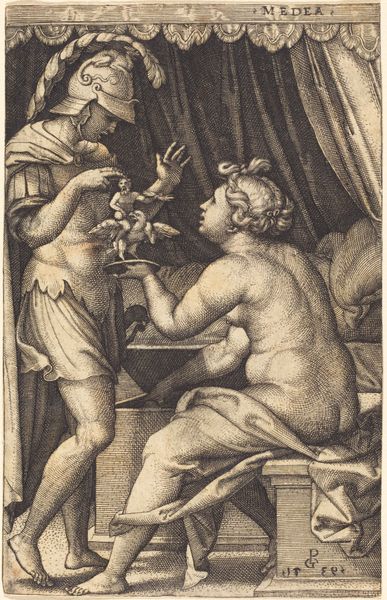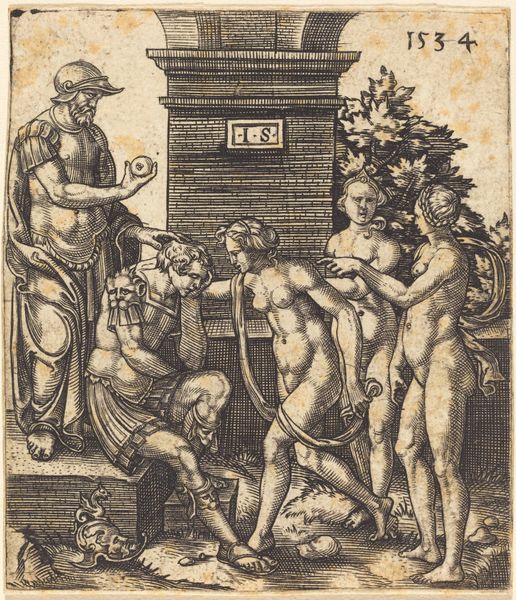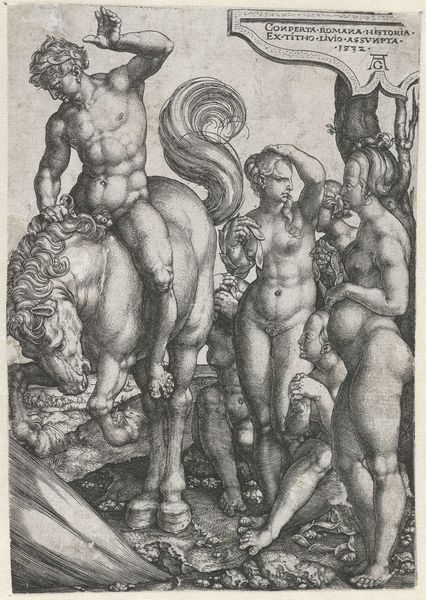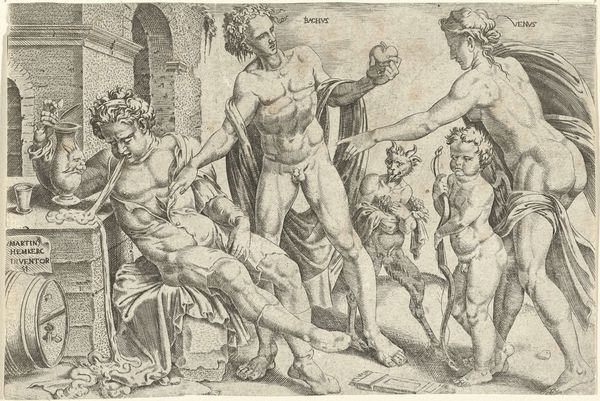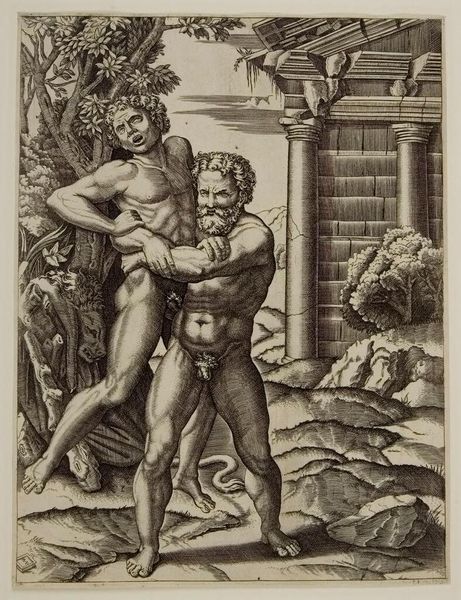
Dimensions: 118 × 74 mm (sheet)
Copyright: Public Domain
Editor: Georg Pencz’s engraving, "Tamiris, from Greek Heroines," created around 1539, presents a rather unsettling scene. The crisp lines and stark contrast amplify the drama of the moment, and I am struck by the… directness, I suppose, of its depiction of power. What do you see in this piece, especially regarding how Pencz uses imagery to tell a story? Curator: This engraving powerfully illustrates the intersection of myth, gender, and power. Tamiris, or Tomyris, Queen of the Massagetae, is depicted here enacting revenge upon Cyrus the Great. But notice how Pencz, though working in 16th-century Germany, evokes classical imagery. Consider the way Tamiris is semi-nude, adorned with only a crown - it connects her visually to idealized representations of antiquity and reinforces a sense of timeless authority. Do you think this allusion to classical forms enhances or detracts from the brutal act depicted? Editor: It adds a layer, definitely. By referencing that visual language of power and heroism, it almost… legitimizes her violence within a certain historical context. Like it’s not just brutality, but justified retribution. Curator: Exactly. The severed head of Cyrus, presented to her, isn’t just a trophy but a symbol. Pencz employs a visual shorthand, drawing on pre-existing cultural associations. The act itself becomes part of a longer dialogue about leadership, justice, and the cyclical nature of violence across cultures. Think about what this image may have signified for the audience encountering it in the 16th century and what that act meant for that society, or how it’s represented now. Editor: So, it’s not just an image of violence, it's an image loaded with historical, cultural, and even psychological weight, prompting the viewer to unpack the meaning of revenge and justice. That's powerful. Curator: Precisely. And it’s a testament to how artists can imbue seemingly straightforward depictions with complex symbolic narratives that continue to resonate across centuries. We see continuities in those narrative structures about honor and dishonor in cycles of power.
Comments
No comments
Be the first to comment and join the conversation on the ultimate creative platform.
